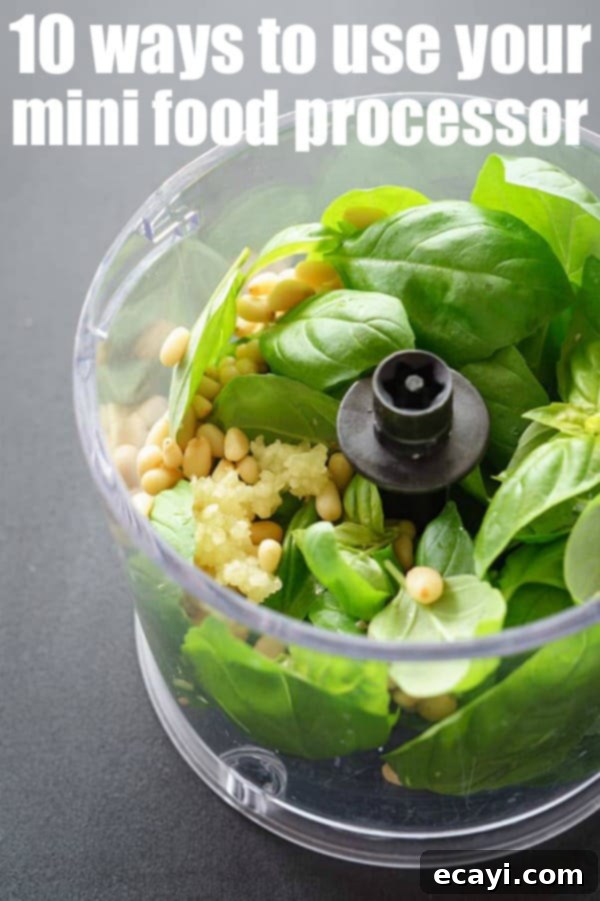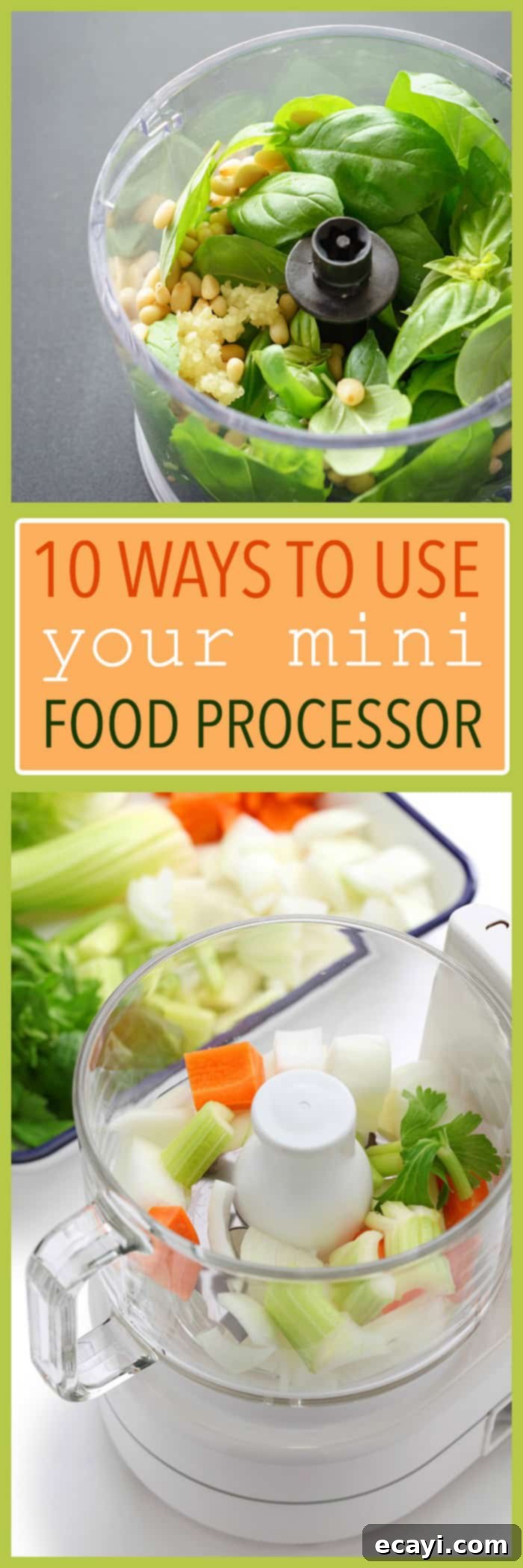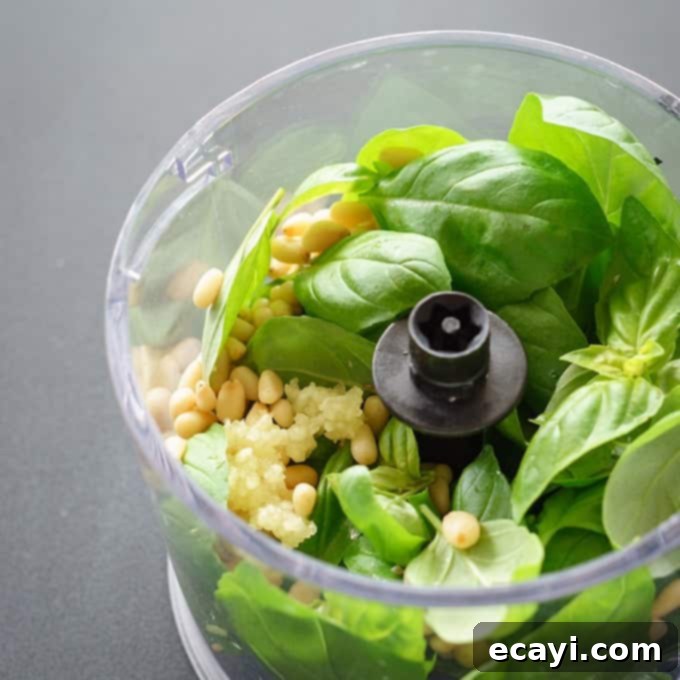Unlock Your Kitchen’s Potential: The Ultimate Guide to Mini Food Processors and Choppers
Do you have that trusty little kitchen companion tucked away in a cabinet, perhaps overshadowed by its larger, more powerful cousins? We’re talking about the mini food processor, often affectionately known as a food chopper. This compact marvel is designed to handle those smaller, everyday tasks that can be tedious with a knife and cutting board. Far from being a mere novelty, this unassuming appliance is a powerhouse of convenience, ready to step up and prove its worth in your culinary adventures.
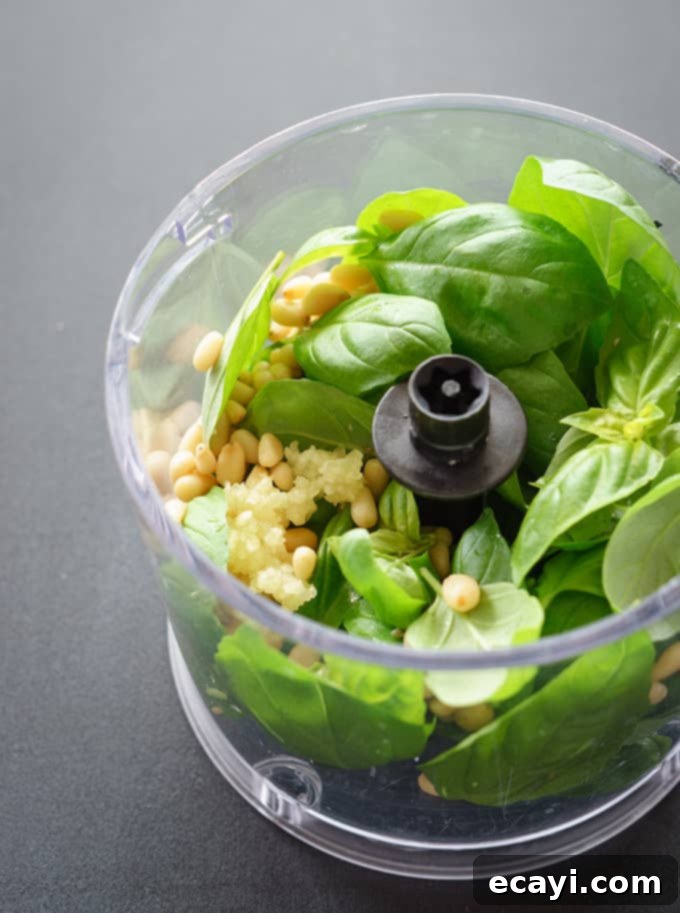
Mini Food Processor vs. Food Chopper: Understanding the Distinction
The terms “food processor” and “food chopper” are often used interchangeably, leading to some confusion. While they share similar functionalities, there are key differences, primarily in capacity and scope of work, as confirmed by many culinary experts. Understanding these distinctions will help you appreciate the specific strengths of your mini appliance.
- Food Chopper (Mini Food Processor): Typically features a bowl capacity ranging from 1 to 4 cups. Its primary functions include chopping, mincing, grinding, and mixing ingredients in smaller quantities. These are perfect for daily meal prep, small batches of sauces, or single-serving recipes. Their compact size makes them easy to store and clean, ideal for kitchens with limited counter space or for individuals/small families.
- Full-Size Food Processor: Offers a much larger capacity, usually between 7 to 12 cups, and sometimes even up to 16 cups. Beyond the capabilities of a chopper, larger models often come with a wider array of attachments, such as slicing discs, shredding discs, and kneading blades for dough. They are built for more intensive tasks like processing large quantities of ingredients, making bread dough, or preparing extensive meals. While powerful, they require more storage space and can be more cumbersome to clean.
In essence, a mini food processor or food chopper excels at smaller, quick tasks, offering efficiency and convenience without the bulk of its larger counterpart. It’s the perfect tool for when a full-sized processor is overkill, and a knife isn’t quite enough.
Why Every Kitchen Needs a Mini Food Processor
Even if you own a larger food processor, a mini version brings unique advantages to your kitchen:
- Space-Saving Design: Its compact footprint means it won’t hog precious counter space and can be easily stored in a cabinet or drawer.
- Quick Cleanup: Fewer parts and a smaller bowl mean washing up is a breeze, often taking less time than cleaning a cutting board and knife.
- Perfect for Small Batches: Ideal for single servings, dips for two, or a small amount of chopped herbs. No more over-processing due to a large bowl.
- Encourages Healthy Eating: Makes it easier to quickly prep fresh vegetables, fruits, and homemade sauces, reducing reliance on pre-packaged alternatives.
- Time-Saving: Chops garlic, onions, and herbs in seconds, significantly speeding up meal preparation.
- Versatility: Despite its size, it can perform a surprising range of tasks, from mincing to pureeing.
Finding the Perfect Mini Food Processor for Your Kitchen
Before you can unleash the full potential of this handy appliance, you’ll want to find one that aligns with your needs, budget, and kitchen aesthetic. The market offers a variety of models, each with its own strengths. Here’s a look at some popular options and what to consider when making your choice.
Popular Mini Food Chopper Brands and Models
Many reputable kitchen appliance brands offer excellent mini food processors. Here are a few examples that stand out:
- Black & Decker: Known for affordability and reliability, Black & Decker offers models like their compact choppers, often available for under $20. These typically feature a 1½-cup capacity, which is ideal for small ingredient prep. Users often appreciate their straightforward operation, compact size, and dishwasher-safe components, making cleanup exceptionally easy. These models are a great entry-level option for anyone looking for basic chopping and mincing capabilities.
- Cuisinart: A powerhouse in the food processor world, Cuisinart’s mini food processors, starting around $30, boast more powerful motors and superior performance compared to some competitors. Their mini prep models often include a 2-speed operation (chop/grind functions) and come in a variety of colors to match your kitchen decor. They offer a good balance of power, durability, and aesthetics for everyday use.
- Ninja Express Chopper: Walmart frequently carries popular Ninja models, such as the Ninja Express Chopper. Ninja products are renowned for their powerful motors and unique blade designs that ensure efficient and uniform chopping. This particular model is often lauded for its ability to handle tougher ingredients with ease and its simple push-button operation. You can check local store availability or order online for convenient delivery or in-store pickup.
- KitchenAid: A brand synonymous with quality kitchen appliances, KitchenAid also produces elegant and robust mini food processors. While they might be priced slightly higher, often around $40-$50, they offer KitchenAid’s signature reliability and design. These models often come with sturdy blades and durable construction, making them a long-lasting investment for your kitchen.
![]()
Key Factors to Consider When Buying Your Mini Food Processor
To ensure you pick the best mini food processor for your needs, keep these points in mind:
- Capacity: Most mini choppers range from 1 to 4 cups. A 1.5 to 2-cup capacity is usually sufficient for single servings or small families. If you frequently make larger batches of dips or sauces, a 3 or 4-cup model might be more suitable.
- Power (Wattage): Higher wattage generally means more power and efficiency, especially for tougher ingredients like nuts or hard vegetables. Look for models with at least 200 watts for reliable performance.
- Ease of Cleaning: Dishwasher-safe parts are a huge plus. Consider models with minimal components and smooth surfaces to simplify cleanup.
- Blade Quality: Stainless steel blades are durable and effective. Some choppers offer reversible blades for different functions (e.g., chopping vs. grinding).
- Safety Features: Look for secure locking mechanisms that prevent the appliance from operating unless properly assembled. Non-slip bases are also important for stability during use.
- Controls: Simple pulse controls are common. Some models offer two speeds (chop/grind) for greater versatility.
- Footprint and Storage: If kitchen space is limited, prioritize truly compact designs.
- Reviews and Warranty: Always check user reviews for insights into real-world performance and durability. A good warranty offers peace of mind.
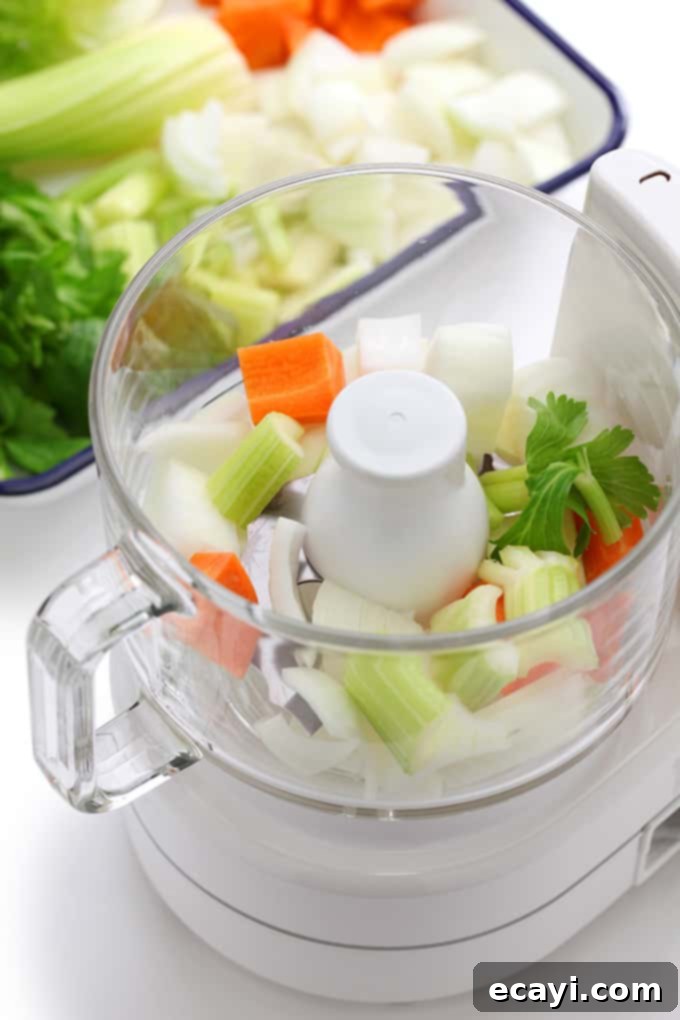
Unleash Its Potential: Top Uses for Your Mini Food Processor
Now that you’ve identified the perfect mini food processor for your kitchen, it’s time to put that little workhorse to good use. Unlike its larger siblings, the mini chopper is lightweight, easily stored, and won’t monopolize your precious counter space. Here are numerous ways this compact appliance can revolutionize your daily meal prep and cooking.
Everyday Culinary Tasks Simplified
- Mincing and Chopping Vegetables with Precision: Say goodbye to tears from chopping onions or tedious mincing of garlic. Your mini food processor makes quick work of carrots, celery, bell peppers, onions, broccoli florets, and garlic. Just a few pulses will yield perfectly chopped or minced vegetables for salads, stir-fries, chilis, stews, or even a simple omelet. The key is to use short pulses to control the consistency; longer holds will result in a finer mince or puree, while quick bursts will give you larger, more rustic pieces. It’s a game-changer for dishes like mirepoix or finely diced ingredients for a salsa.
- Crafting Fresh Guacamole and Other Dips: Impress your guests (or yourself!) with fresh, creamy guacamole in minutes. Simply toss chunks of ripe avocado into the container, add a squeeze of fresh lime juice, a pinch of dried onion flakes, and garlic salt. Pulse until you reach your desired consistency – from chunky to smooth. This method also works wonders for other dips like hummus, bean dips, or even a simple herb yogurt dip. The small size ensures all ingredients are evenly incorporated without over-processing.
- Wholesome Homemade Sauces and Dressings: Ditch the jarred stuff and whip up fresh, flavorful sauces. For an easy marinara, combine fresh or canned diced tomatoes, onion pieces, garlic, basil, and oregano. Pulse until smooth or slightly chunky, then warm on the stove or in the microwave for a delicious pasta sauce. It’s also fantastic for making homemade salad dressings, combining olive oil, vinegar, herbs, and spices into a perfectly emulsified mixture.
- Creating Nutritious Homemade Baby Food: For parents who prefer homemade options, your mini food processor is an invaluable tool. Cook up sweet potatoes, green beans, apples, pears, or any other soft fruit or vegetable your baby enjoys. Allow the food to cool slightly, then puree until it reaches the desired smooth consistency. You can even divide the pureed baby food into an ice cube tray and freeze it for convenient, pre-portioned meals. Just pop out the required number of cubes and thaw them in the microwave, always checking the temperature before feeding.
- Quick and Healthy Single-Serve Smoothies: While not a full-fledged blender, a mini food processor can handle a quick, single-serving smoothie. Combine yogurt with berries, banana, pineapple or peach chunks, and a splash of milk or juice. Pulse until smooth for a refreshing, nutritious drink on the go. It’s perfect for those busy mornings when you need a healthy boost without the fuss of a large blender.
- Preparing Nuts for Baking and Beyond: Need finely chopped nuts for a recipe, or a coarse crumble for a topping? Your mini chopper is ideal. Toss in almonds, walnuts, pecans, or peanuts and pulse to achieve your desired texture – from a fine meal to larger chunks. You can even take it a step further and make your own nut butter! With a bit more processing time (and scraping down the sides), you can transform roasted nuts into creamy, homemade almond, peanut, or cashew butter. Just be patient and let the machine work its magic. Check out various online guides for detailed instructions on making homemade nut butters.
- Homemade Pet Treats: Don’t forget your furry friends! A mini food processor can make preparing homemade dog or cat treats much simpler. Many recipes call for pureeing ingredients like pumpkin, sweet potato, peanut butter, or meat, which your chopper can handle effortlessly. This allows you to control the ingredients, ensuring healthy, additive-free snacks for your pets. Simple recipes often involve blending cooked ingredients with a binding agent like flour or oats, then baking.
- Perfect Chocolate Chunks and Crumbles: The thought of homemade chocolate chunks makes any dessert lover’s mouth water. Instead of buying pre-packaged chocolate chips, you can chop a bar of your favorite chocolate into uniform chunks for cookies, brownies, or muffins. You can also create fine chocolate crumbles to sprinkle over ice cream sundaes, puddings, or hot beverages for an elegant touch.
- Fresh, Flavorful Salsas for Every Occasion: From restaurant-style smooth salsa to a chunky pico de gallo, your mini food processor is a salsa maestro. Combine canned or fresh tomatoes, onions, peppers (jalapeños or bell peppers), cilantro, and a squeeze of lime juice. Pulse a few times for a rustic, chunky salsa perfect for dipping, or blend longer for a smoother, more refined texture. It’s significantly faster than dicing by hand and ensures consistent results.
- Gourmet Pestos and Spreads: Elevate your pasta dishes, sandwiches, or appetizers with homemade pesto. Traditional basil pesto, with fresh basil, pine nuts, garlic, Parmesan cheese, and olive oil, comes together in moments. But don’t stop there! Experiment with sun-dried tomato pesto, cilantro pesto, or even a spinach and walnut pesto. The mini chopper ensures all ingredients are finely ground and perfectly blended into a vibrant, flavorful spread.
Beyond the Basics: Advanced Tips for Your Mini Chopper
- The Pulse Technique is Key: For most tasks, short, intermittent pulses are better than continuous running. This gives you more control over the texture and prevents over-processing.
- Don’t Overfill: Respect the capacity limits of your mini chopper. Overfilling can strain the motor and lead to uneven results. Process in batches if necessary.
- Cut Larger Ingredients: For items like hard vegetables or dense cheese, cut them into smaller, uniform pieces before adding them to the chopper to ensure even processing and prevent blade jams.
- Add Liquids Gradually: When making sauces or dressings, add liquids slowly through the drizzle hole (if your model has one) or in small increments while pulsing to achieve perfect emulsification.
Maximizing Your Mini Food Processor: Care and Maintenance
To ensure your mini food processor remains a dependable kitchen assistant for years to come, proper care and maintenance are essential:
- Immediate Cleaning: The easiest way to clean your mini chopper is right after use. Rinse the blade, bowl, and lid under warm running water. Food particles are much easier to remove before they dry.
- Dishwasher Safe Parts: Most mini food processor bowls, lids, and blades are dishwasher safe (top rack recommended). Always check your specific model’s manual for confirmation.
- Handle Blades with Care: The blades are extremely sharp. Always handle them by the central hub and be cautious when washing them by hand or removing them from the dishwasher.
- Wipe Down the Base: The motor base should never be immersed in water. Simply wipe it clean with a damp cloth, ensuring it’s unplugged beforehand.
- Proper Storage: Store the appliance with the blade securely in the bowl, or in a protective cover, to prevent accidents and keep all parts together.
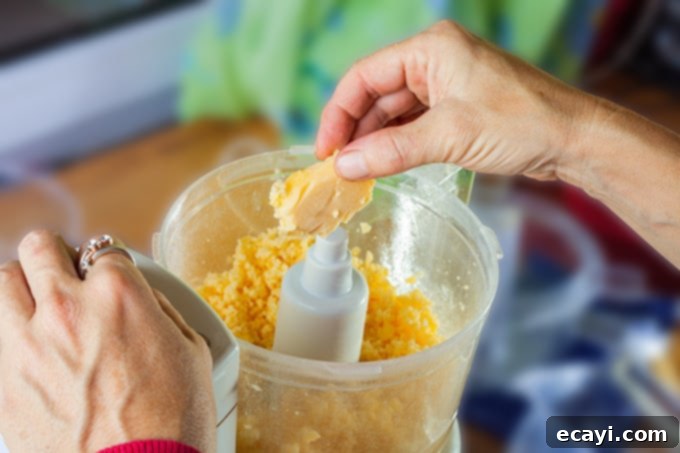
Conclusion: Your Small Appliance, Big Impact
While a few quick chops with a knife will always have its place in the kitchen, there are countless situations where a mini food processor truly shines. It’s not about replacing traditional methods, but about enhancing efficiency and ease, especially when ingredients demand more precision or when you’re dealing with smaller quantities. This compact, versatile appliance saves time, reduces effort, and opens up a world of culinary possibilities, from healthy homemade baby food to gourmet pestos. So, dust off your mini food chopper, embrace its capabilities, and let this small but mighty tool become an indispensable part of your everyday cooking routine.
